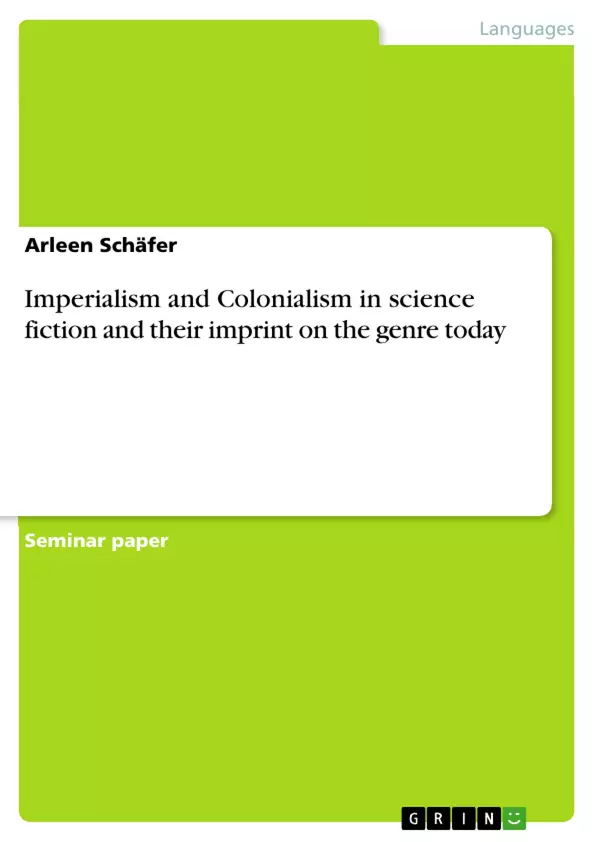Postmodern SiFi series like "The 100" or "Snowpiercer" also employ methods of colonialism and imperialism reminiscent of classic novels like "The Time Machine". Class societies and discrimination seem to be firmly linked to the genre. This thesis compares "The 100" series to "The Time Machine", focusing on the aspects of the narrative that are shaped by colonialism and imperialism.
Auch in postmodernen SiFi Serien wie "The 100" oder "Snowpiercer" werden Methoden des Kolonialismus und Imperialismus angewendet, die an Klassiker wie "The Time Machine" erinnern. Klassengesellschaften und Diskriminierung scheinen fest mit dem Genre verbunden zu sein. Diese Arbeit vergleicht die Serie "The 100" mit "The Time Machine" und fokussiert sich dabei auf die Aspekte der Narration, die von Kolonialismus und Imperialismus geprägt sind.
Inhaltsverzeichnis (Table of Contents)
- Introduction – Imperialism in science fiction
- Othering after Homi Bhaba, Gayatri Spivak and Edward Said
- The dependency theory by Grosfoguel
- Imperialism in The Time Machine from H. G. Wells
- The Eloi, the Morlocks and The Time Traveller as Prometheus
- Imperialism and Colonialism in the TV-Series The 100
- The comparison to The Time Machine
- Conclusion and result
- Literature
Zielsetzung und Themenschwerpunkte (Objectives and Key Themes)
This paper explores the impact of imperialism and colonialism on science fiction, analyzing the genre's development and its portrayal of foreign cultures. The paper focuses on how these historical forces shaped the genre's themes and motifs, particularly in relation to the concept of "Othering" and the power dynamics inherent in colonial relationships.
- The influence of imperialism and colonialism on science fiction
- The concept of "Othering" and its representation in science fiction
- The role of power dynamics in colonial relationships and their impact on genre narratives
- The evolution of science fiction's portrayal of imperialism and colonialism across different time periods and mediums
- The relevance of postcolonial theories for understanding science fiction narratives
Zusammenfassung der Kapitel (Chapter Summaries)
The introduction provides an overview of the impact of imperialism and colonialism on science fiction, connecting the genre's development to the historical context of the British Empire. The chapter introduces key concepts such as "Othering" and the dependency theory to frame the analysis. The second chapter examines H. G. Wells's The Time Machine, analyzing its portrayal of imperialism and colonialism through the lens of Bhabha's theory of "Othering," Said's concept of Orientalism, and Grosfoguel's dependency theory. The chapter also explores the role of the Time Traveler as a figure representing Prometheus, a powerful figure who brings knowledge and technology to a less advanced society, highlighting the potential dangers of such advancements.
Schlüsselwörter (Keywords)
The primary keywords and focus topics of the text are: imperialism, colonialism, science fiction, "Othering," Homi Bhabha, Edward Said, Grosfoguel, Dependency theory, The Time Machine, The 100, postcolonialism, hybridization, mimicry, cultural diversity.
- Quote paper
- Kulturanthropologe B.A.; Ethnologe B.A. Arleen Schäfer (Author), 2020, Imperialism and Colonialism in science fiction and their imprint on the genre today, Munich, GRIN Verlag, https://www.grin.com/document/1007966



